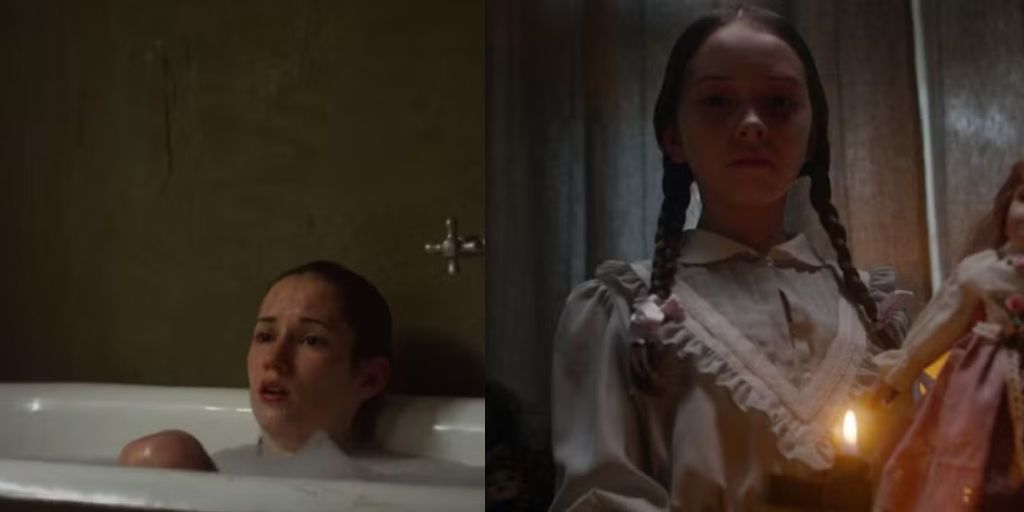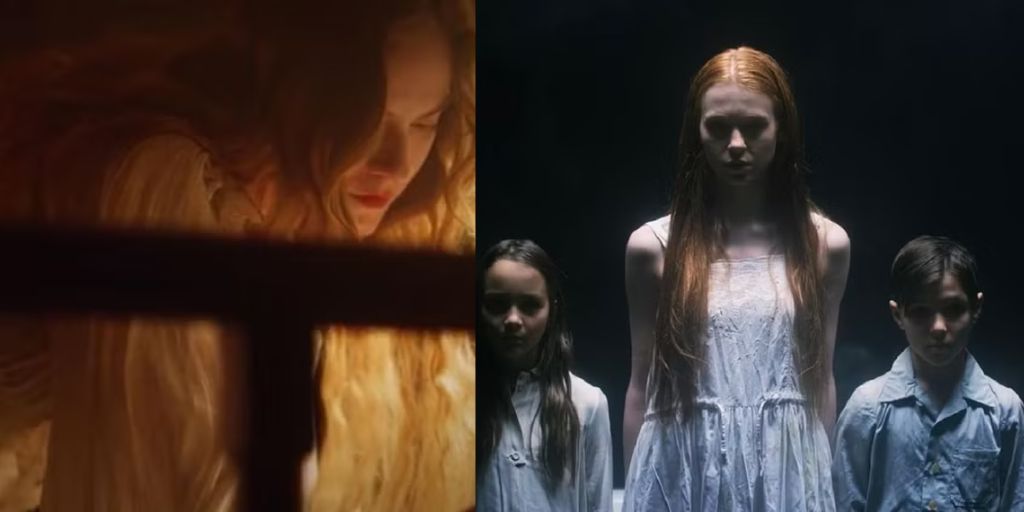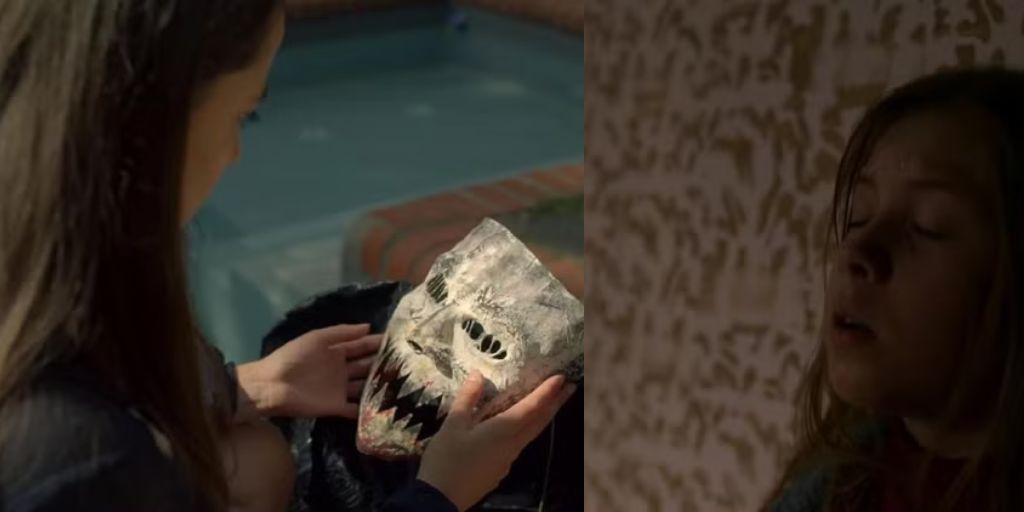While horror reality shows often seem fake or scripted, Netflix’s Haunted stands out as something truly unique. The pseudo-documentary series began in 2018 and has had three seasons, with each one scarier than the last. The show features people who have faced paranormal events. They sit with their friends and family to share their memories of these traumatic incidents.
The series includes stories about encounters with demonic beings, cults, and even alien abductions. Each episode presents a new, terrifying story. Some episodes even show true-crime tales that leave a lasting impact on those who experienced them.
Haunted also has a Mexican spinoff titled Haunted: Latin America, which taps into the culture’s folklore and supernatural beliefs. Since the show focuses on personal experiences with the supernatural, it often leaves viewers with unresolved questions, which adds to the horror.
The Authentic Storytelling of ‘Haunted’
What makes Haunted different from other paranormal reality shows is its focus on storytelling rather than ghost hunting or investigating haunted places. Many paranormal shows focus on proving whether or not ghosts exist by searching for evidence in supposedly haunted locations.
However, Haunted takes a different approach. It shines a light on the personal experiences of those who claim to have faced supernatural events. The individuals featured on the show are not trying to provide evidence or debunk any myths; they simply share their stories.
The emotional and psychological effects of these encounters are the main focus of the show. Each storyteller goes deep into how these experiences changed their lives and affected them.
The storytelling invites viewers to experience the horror these narrators went through. This approach helps create a strong connection between the viewers and the narrators, allowing the audience to empathize with their experiences.
One of the best aspects of the show is that it does not rely on shock value to scare its viewers. Instead, Haunted builds a creepy atmosphere through the sincerity of each story. This emotional connection is essential to the show’s success.
When viewers listen to someone share a personal and frightening experience, they feel the fear and tension more deeply. This makes Haunted a more immersive and emotional experience compared to other horror shows that may rely solely on jump scares.
The Show’s Self-Awareness
Haunted successfully blurs the line between reality and fiction. Pseudo-documentaries are meant to mix scripted events with realistic interviews and narratives. This approach engages viewers and often makes them question whether the stories are true.
Haunted does this effectively, claiming to tell “true stories” about horror encounters but never stating that the encounters themselves are undeniably true. This choice allows viewers to make their own judgments about the stories presented.
The show does not feature follow-up investigations to confirm the validity of the stories told. Instead, it focuses on the experiences of the storytellers.

This decision allows viewers to analyze everything the narrators say, leading to a unique viewing experience. The audience can reflect on the details and emotions presented in each story, which makes Haunted more engaging than many other horror reality shows.
Unlike some pseudo-documentaries that fail to capture the essence of their stories, Haunted excels in creating an atmosphere that is both creepy and engaging.
The show’s creepy music, effective sound design, and visual recreations add to the storytelling. Each element works together to enhance the eerie feeling and keep the audience on the edge of their seats.
The Emotional Impact of Audience Reactions
While Haunted might not be the scariest reality show, it brings a raw and genuine quality that is admirable. One of the standout aspects of the show is the audience’s involvement.
Instead of having random strangers listen to the storytellers, Haunted features friends, family, and loved ones as the audience. This choice adds an emotional layer to the stories being shared, especially when the stories are particularly intense.
The dynamic between the storyteller and the audience creates an intimate “fly-on-the-wall” experience. This setup blurs the lines between supernatural horror and real, personal trauma. When viewers see someone recount a traumatic experience, they can connect with the emotions being expressed.
For instance, in Season 1, Episode 2, a family shares horrifying memories of living with a serial killer. Terrilyn narrates the story along with her nephew Jacob and sister Sadie while one of their friends listens intently.
The episode is filled with tension as the three narrators recall their memories, with Jacob discussing how his grandfather groomed him to become a murderer.
As the story unfolds, the friend listening asks questions and expresses shock, prompting the narrators to dig even deeper into their experiences. This interaction creates an emotional bond, making the audience feel connected to the story.
Viewers of Haunted come from all walks of life, including those who might be skeptical about the stories being told. In Season 1, Episode 1, a man named Jacob Hawkins recounts his experience being haunted by a ghost called “The Woman in White.”
His friend, listening to the story, is skeptical and challenges the authenticity of Jacob’s account. This interaction adds another layer of intrigue to the show, as it reflects the various reactions people have when confronted with the supernatural.
The Storytelling Style
The storytelling style of Haunted is key to its success. Each episode begins with the narrator describing their experience in detail. They explain what happened, how it made them feel, and how it impacted their lives. The show often includes reenactments, which help visualize the story.
These reenactments do not overshadow the main story but instead enhance the emotional weight of the experience being shared.
The show’s creators use various techniques to keep the audience engaged. The visual elements include dark, moody lighting and dramatic music that builds tension. The combination of storytelling, visuals, and sound design creates an atmosphere that draws viewers in and keeps them engaged.
Additionally, the use of first-person narratives adds authenticity to each story. The narrators speak directly to the camera, creating a sense of intimacy and connection. When someone shares a deeply personal experience, it resonates more strongly with the audience. This personal touch makes the horror feel more real and relatable.
Themes of Trauma and Resilience
Many stories featured in Haunted touch on themes of trauma and resilience. The narrators do not just share their experiences; they also discuss how these events have affected their lives in the long term.

Some narrators reveal how they cope with their fears, while others discuss the lasting impact of their encounters. This focus on trauma adds depth to the show, making it more than just a collection of scary stories.
For example, in one episode, a narrator shares their experience of being haunted after a traumatic event in their life. They describe how the encounter changed their perception of reality and how they struggled with anxiety afterward. This vulnerability allows viewers to connect with the narrators on a deeper level, as many people have faced their own forms of trauma.
The show emphasizes the importance of sharing these experiences. By allowing individuals to tell their stories, Haunted provides a platform for people to express their fears and anxieties. This sharing can be a healing process, as it helps narrators confront their past and find strength in their experiences.
A Cultural Scheme
Haunted: Latin America offers a fresh perspective on the supernatural by incorporating cultural folklore and beliefs from Latin American countries.
This spinoff maintains the core structure of the original show while highlighting the rich scheme of stories rooted in Latin American traditions. The narratives often draw from local legends, myths, and cultural experiences, making them unique and relatable to audiences familiar with those cultures.
The incorporation of folklore adds another layer to the storytelling. The supernatural elements are not just random occurrences; they are deeply connected to the cultural context of the region. Viewers learn about the significance of certain entities or spirits within the culture, which enhances their understanding of the stories being told.
For example, one episode may focus on a well-known figure from local folklore, like La Llorona, who is said to wander near bodies of water, crying for her lost children. By sharing these stories, Haunted: Latin America allows viewers to connect with cultural heritage while also experiencing the fear that comes from these legends.
This cultural scheme is essential in showcasing how supernatural beliefs can shape personal experiences. By examining how these stories impact individuals within a cultural context, the show broadens its scope and appeals to a diverse audience.
The Role of Skepticism
Skepticism plays an important role in Haunted. The show recognizes that not everyone will accept the supernatural at face value. Viewers are encouraged to question the authenticity of each story, and the presence of skeptical friends or family members adds an interesting dynamic to the episodes.
By incorporating skeptics into the narrative, Haunted allows for healthy discussions about belief and doubt. This element encourages viewers to engage with the material critically. For instance, when a skeptic challenges a storyteller, it opens the door for discussions about the nature of fear, belief, and the unknown.
This inclusion of skepticism does not diminish the horror; instead, it enhances it. The uncertainty surrounding the truth of each story adds tension and intrigue, as viewers are left to wonder what is real and what may be a product of imagination or fear. This complexity adds depth to the show’s themes and keeps the audience engaged.
The Impact of Haunted on Horror Culture
Since its debut, Haunted has made a significant impact on horror culture. It has changed how paranormal stories are told on television and influenced other shows within the genre. By focusing on personal narratives and emotional experiences, Haunted sets itself apart from traditional horror shows that rely on jump scares or elaborate investigations.
The show has also sparked conversations about the nature of fear. It encourages viewers to reflect on their own experiences with the supernatural and consider how trauma can shape one’s understanding of fear. Many fans of the show appreciate its authenticity and the emotional depth it brings to the horror genre.
Additionally, Haunted has encouraged a new generation of storytellers to share their own experiences with the supernatural. Social media platforms have seen an increase in people sharing their personal ghost stories and paranormal encounters, inspired by the narratives presented in the show. This shift has led to a greater appreciation for storytelling as a means of processing fear and trauma.
Conclusion: Why You Should Watch ‘Haunted’
As the spooky season approaches, Haunted is a must-watch for anyone interested in the paranormal. The series offers a refreshing take on horror, focusing on personal experiences and emotional storytelling. Its unique format, compelling narratives, and deep scheme of trauma make it stand out in the reality television world.

The emotional depth of each story, combined with the raw reactions of family and friends, creates an engaging viewing experience. By allowing viewers to connect with the narrators, Haunted successfully immerses its audience in the fear and trauma of supernatural encounters.
All seasons of Haunted are available for streaming on Netflix, and while there is no news about a fourth season yet, the existing episodes provide plenty of spine-chilling content for fans of the genre.
So grab some popcorn, settle in, and prepare for an emotional and eerie journey with Haunted this spooky season. Whether you believe in the supernatural or not, the stories told in this series will undoubtedly leave a lasting impression.





